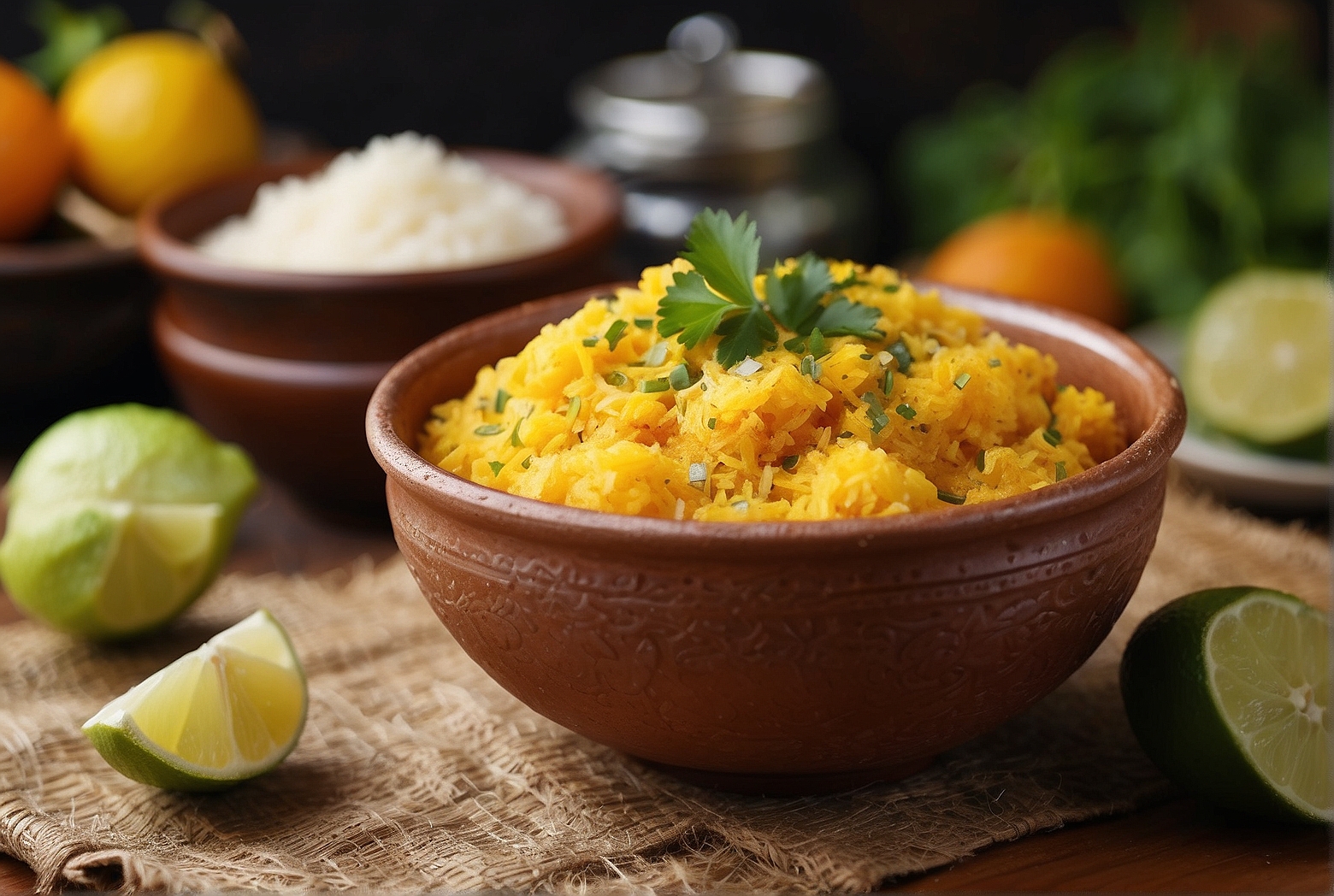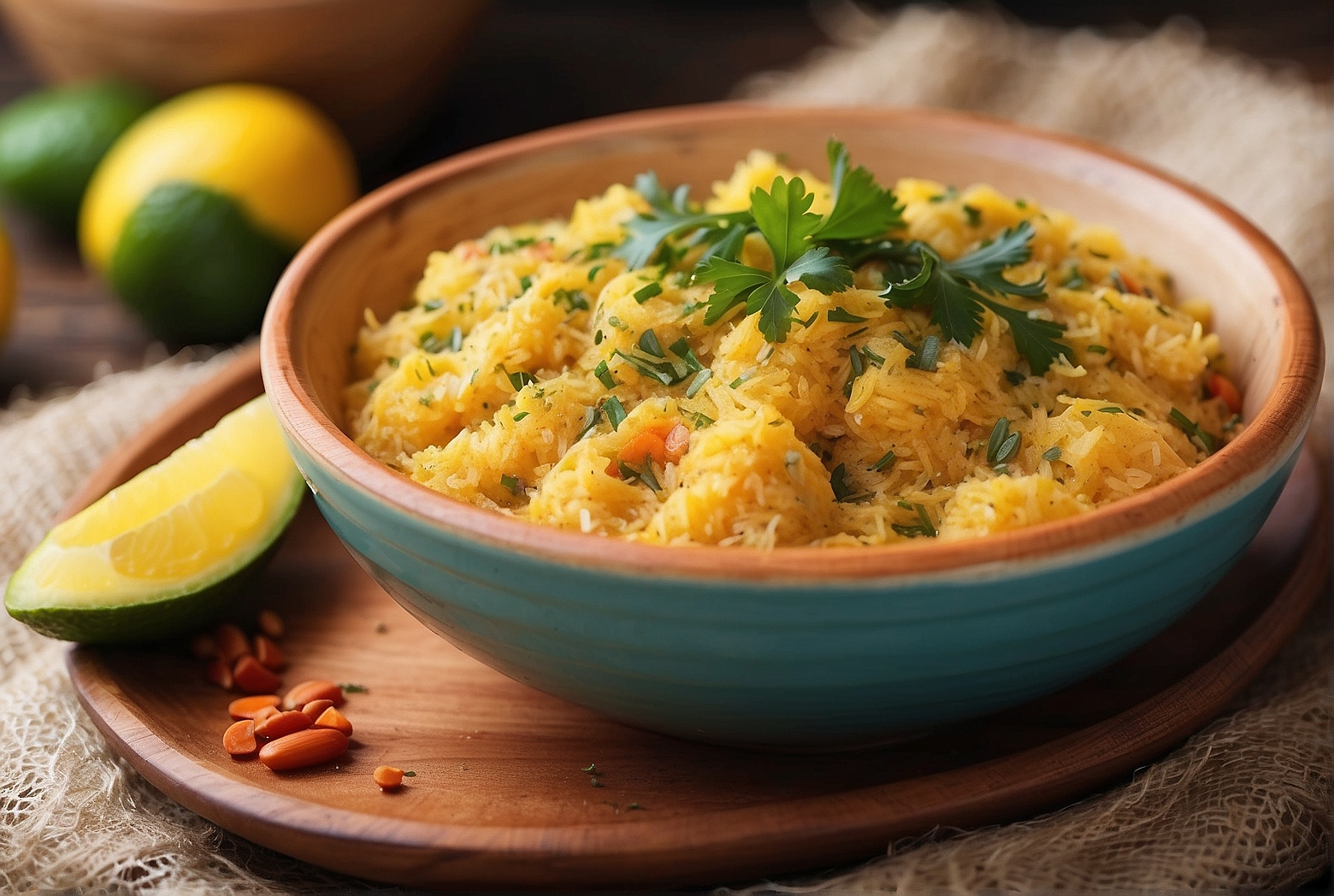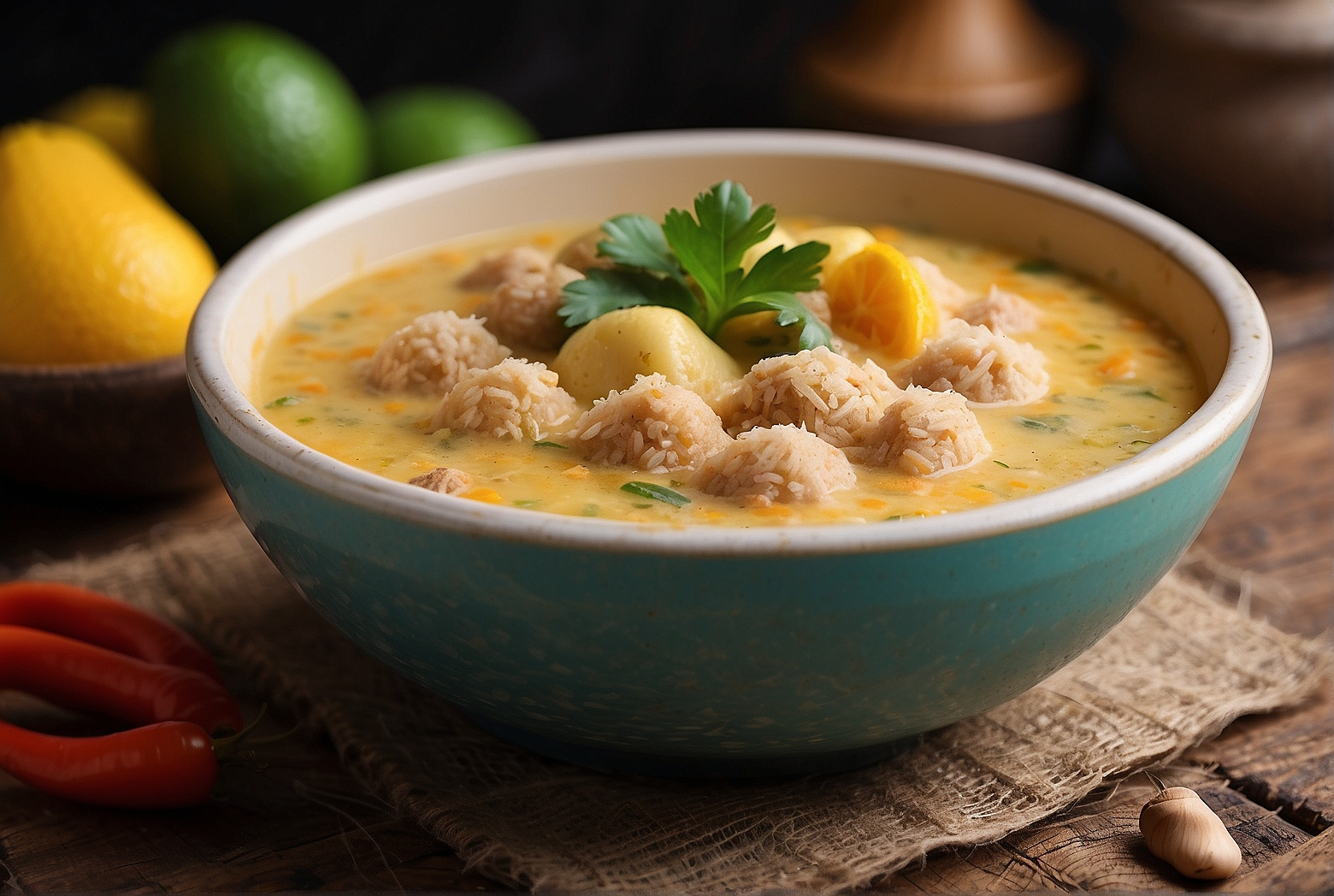Are you ready to embark on a culinary journey to Brazil? Get ready to tantalize your taste buds with the authentic Brazilian Acarajé recipe. This mouthwatering dish is a beloved street food in Brazil and is known for its rich flavors and unique combination of ingredients. From frying the perfect dough to filling it with delicious shrimp and irresistible toppings, we’ll guide you through the step-by-step process of recreating this traditional and flavorful dish in your own kitchen. Get ready to savor the taste of Brazil right at home!
What is Acarajé?
Acarajé is a traditional Brazilian street food that originated in the state of Bahia, in the northeastern part of the country. It is a popular snack that is widely enjoyed throughout Brazil and has become a symbol of Bahian cuisine. This delicious treat is made by deep frying a dough made from black-eyed peas and then filling it with various ingredients. Acarajé is not only a tasty snack, but it also holds deep religious and cultural significance, making it a must-try dish for anyone visiting Brazil or interested in experiencing the vibrant flavors of Brazilian cuisine.
Brief history and origin
The history of Acarajé dates back to the period of slavery in Brazil. It is believed that Acarajé was originally brought to the country by African slaves from the region of West Africa. They brought with them their culinary traditions, including the use of black-eyed peas. Over time, Acarajé became an integral part of Bahian cuisine and culture, with street vendors selling these savory fritters in the bustling markets and streets of Salvador, the capital city of Bahia. Today, Acarajé stands as a testament to the resilience and cultural heritage of Afro-Brazilian communities.
Traditional Brazilian street food
Acarajé is one of the most beloved street foods in Brazil. The process of making Acarajé begins with the preparation of the black-eyed pea dough, which is then shaped into small balls and deep-fried until they turn golden brown. The fried dough balls are then cut open and filled with a variety of delicious stuffings and toppings. The most common fillings include vatapá, a spicy paste made with shrimp, bread, peanuts, and spices, and caruru, a spiced okra and shrimp sauce. The Acarajé is typically served on banana leaves or plates, making it a convenient food to enjoy while exploring the streets of Brazil.
Acaraj̩ festival Рreligious and cultural significance
Acarajé holds immense religious and cultural significance in Bahia, where it is an integral part of the Afro-Brazilian religion known as Candomblé. In Candomblé, Acarajé is considered a sacred food that is offered to the deities during religious ceremonies. The preparation and sale of Acarajé is traditionally done by women known as “baianas,” who dress in traditional white dresses and head wraps. These baianas play a crucial role in preserving the religious and culinary traditions associated with Acarajé. In addition to its religious significance, Acarajé also serves as a symbol of cultural pride and identity for Afro-Brazilians in Bahia.
Main Ingredients
To make Acarajé, you will need the following main ingredients:

Black-eyed peas
Black-eyed peas form the base of the dough used to make Acarajé. These legumes are soaked, blended, and shaped into balls before being deep-fried to perfection.
Onion
Onions are added to the black-eyed pea dough for flavor and aroma. They are blended together with the peas and salt to create a smooth and well-seasoned dough.
Salt
Salt is a crucial ingredient in the preparation of Acarajé, as it helps to enhance the overall flavor of the dough.
Palm oil
Palm oil is the traditional cooking oil used to deep fry the Acarajé. It adds a distinct flavor and richness to the fritters.
Dried shrimp
Dried shrimp is a common ingredient used in the filling of Acarajé. It adds a unique taste and texture to the dish.
Chili pepper
Chili pepper is used to add a spicy kick to the filling of Acarajé. It can be adjusted to suit your personal preference for heat.

White flour
White flour is sometimes used in the dough mixture to achieve the desired consistency and texture.
Water
Water is used to soak the black-eyed peas and to blend them into a smooth paste.
Toppings: vatapá, caruru, salad, shrimp
The toppings for Acarajé are what make it truly special. Vatapá, a spicy shrimp and bread paste, and caruru, a spiced okra and shrimp sauce, are the most common fillings. In addition, a fresh salad made with ingredients like tomatoes, lettuce, and onions, and cooked shrimp can be added to enhance the flavors and textures of the dish.
Preparing the Black-eyed Pea Dough
To make the perfect Acarajé dough, follow these steps:
Soaking the peas
Start by soaking the black-eyed peas in water overnight or for at least 8 hours. This will soften the peas and make them easier to blend.
Drain and remove skins
After soaking, drain the peas and remove their skins by rubbing them gently between your hands. This step helps to achieve a smoother dough texture.
Blending the peas with onions and salt
Now, blend the skinned black-eyed peas together with onions and salt until you get a smooth and uniform paste. It’s recommended to blend in batches to ensure a consistent texture.
Shaping the dough into balls
Using your hands, shape the dough into small balls, about the size of a golf ball. Ensure they are well-formed and compact so that they hold their shape during frying.
Deep Frying the Acarajé
Once the dough is ready, it’s time to move on to the frying process. Follow these steps for crispy and golden Acarajé:
Heating palm oil in a deep pan
Begin by heating palm oil in a deep pan over medium heat. It’s important to use enough oil to fully cover the Acarajé balls while frying.
Frying the dough balls until golden brown
Carefully place the shaped dough balls into the hot oil, making sure not to overcrowd the pan. Fry them until they turn a beautiful golden brown color on all sides.
Draining excess oil with a slotted spoon
Once the Acarajé balls are cooked to perfection, remove them from the oil using a slotted spoon. Allow the excess oil to drain off before transferring them to a plate lined with paper towels.
Preparing the Stuffings and Toppings
The fillings and toppings are what give Acarajé its delicious and vibrant flavors. Here are the common options:
Vatapá – a spicy paste made with shrimp, bread, peanuts, and spices
Vatapá is a mouthwatering paste that combines shrimp, bread, peanuts, and spices. It is prepared by cooking the ingredients together until they form a thick and flavorful paste.
Caruru – a spiced okra and shrimp sauce
Caruru is a delightful sauce made with okra, shrimp, and various spices. It adds a tangy and savory element to the Acarajé.
Salad – ingredients like tomatoes, lettuce, and onions
Fresh salad ingredients, such as tomatoes, lettuce, and onions, add a refreshing crunch and freshness to the Acarajé. Feel free to customize the salad based on your preferences.
Cooked shrimp – optional for added protein
For those looking to add some extra protein to their Acarajé, cooked shrimp can be added as a filling or a topping. It complements the other flavors and textures beautifully.
Assembling and Serving Acarajé
Now that all the components are ready, it’s time to assemble and serve your delicious Acarajé. Follow these steps:
Cutting open the fried dough balls
Using a sharp knife, carefully cut open the fried dough balls horizontally, creating a pocket for the fillings.
Spreading vatapá and caruru inside
Take a spoonful of vatapá and caruru and spread them evenly inside the open Acarajé. Be generous with the fillings to ensure each bite is packed with flavor.
Adding salad and shrimp
Next, add a portion of the fresh salad and cooked shrimp on top of the fillings. These additional ingredients will enhance the visual appeal and taste of the Acarajé.
Optional: adding hot pepper sauce for extra spice
If you enjoy spicy food, consider adding some hot pepper sauce to your Acarajé. This will provide an extra kick of heat and elevate the flavor profile of the dish.
Serving on banana leaves or plates
To complete the presentation, serve your Acarajé on banana leaves for an authentic touch, or simply use plates if banana leaves are not available. This adds a charming and traditional element to the dining experience.
Tips for Perfect Acarajé
Making Acarajé can be a fun and rewarding experience. Here are some tips to help you achieve the best results:
Soaking the black-eyed peas overnight
Ensure you soak the black-eyed peas overnight or for the specified time. This will soften them and make them easier to blend into a smooth dough.
Blending in batches for a smoother dough
To achieve a uniform texture, blend the black-eyed peas in batches rather than all at once. This will ensure a smoother and consistent dough.
Using a deep frying thermometer for accurate temperature
To achieve perfectly fried Acarajé, use a deep frying thermometer to monitor the temperature of the oil. This will help you maintain the ideal frying temperature and prevent the fritters from becoming greasy.
Avoid overcrowding the pan while frying
To ensure even frying and crispy results, avoid overcrowding the pan. Fry the Acarajé in small batches, allowing enough space for them to float freely in the oil.
Using fresh and quality ingredients
To truly savor the flavors of Acarajé, use fresh and high-quality ingredients. This will enhance the taste and overall experience of the dish.
Variations and Adaptations
While the traditional Acarajé recipe is delectable on its own, there is room for experimentation and adaptation. Here are some variations you can explore:
Vegetarian or vegan Acarajé options
For those following a vegetarian or vegan diet, Acarajé can be easily adapted. Simply omit the shrimp and use vegetable-based fillings and toppings, such as grilled vegetables or plant-based protein alternatives.
Using different fillings and toppings
Feel free to get creative with the fillings and toppings. Diversify the flavors by incorporating ingredients like cheese, guacamole, or even pulled pork for a fusion twist.
Experimenting with alternative flours
While the traditional recipe calls for white flour, you can experiment with alternative flours to suit dietary preferences or allergies. Consider using cassava flour or chickpea flour as substitutes for a unique twist on the classic recipe.
Acarajé and Brazilian Cuisine
Acarajé holds a special place in Brazilian culinary traditions. Not only is it a beloved street food, but it also represents the richness and diversity of Brazilian cuisine. Brazil is known for its vibrant and flavorsome dishes, influenced by various cultures and regions within the country. From feijoada, a hearty bean and meat stew, to pão de queijo, delicious cheese bread, Brazilian cuisine offers a wide range of taste experiences. When exploring Brazilian cuisine, be sure to savor other popular dishes such as moqueca (a flavorful fish stew), coxinha (fried chicken dumplings), and brigadeiro (chocolate truffles).
Cultural significance of sharing food
Food has always held immense cultural significance, and Acarajé is no exception. In Brazil, sharing food is deeply rooted in the cultural fabric, representing unity, togetherness, and friendship. Acarajé, with its history and associations with religious and cultural traditions, brings people together in celebration. Whether enjoyed at a lively street market or as part of a religious ceremony, Acarajé fosters a sense of community and connection. By embracing the culinary traditions of different cultures, we not only indulge in delicious food but also build bridges of understanding and appreciation for one another.
Conclusion
Acarajé is much more than a delicious street food; it is a symbol of Brazilian culinary heritage and cultural pride. This traditional snack, with its origins rooted in the African diaspora, has become an integral part of Brazilian cuisine, particularly in the state of Bahia. The process of making Acarajé involves delicately shaping and deep frying a dough made from black-eyed peas, then filling it with mouthwatering stuffings and toppings. As you take your first bite of Acarajé, you will experience a delightful explosion of flavors and textures that reflect the diversity of Brazil.
With this comprehensive recipe guide and the tips provided, you’re well-equipped to embark on your Acarajé journey. Soak the black-eyed peas, blend them with onions and salt, shape the dough into balls, and deep fry until golden brown. Once cooked, fill the Acarajé with vatapá, caruru, salad, and shrimp, and enjoy this delectable snack on banana leaves or plates. By making Acarajé at home, you not only get to savor its rich flavors but also gain a deeper appreciation for the cultural heritage it embodies. So why not gather your friends and family, and embark on an Acarajé adventure together? Don’t forget to relish the unique experience and the vibrant flavors that make Acarajé stand out in Brazilian cuisine. Appreciate the boldness and richness of Brazilian flavors, and let Acarajé transport you to the streets of Bahia, where culinary traditions come alive.
